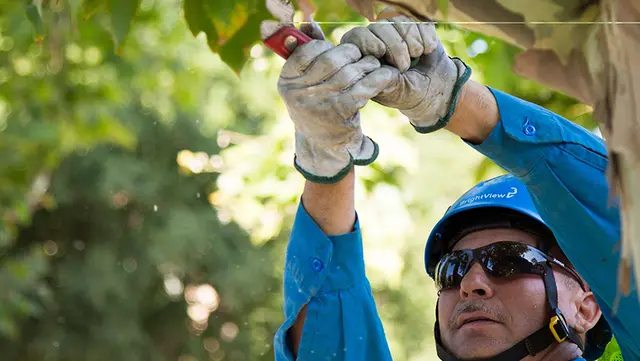How Does a Tree's Root System Form and What is Its Purpose? - Ask BrightView
Ask BrightView: Episode 12
Roots do more than just provide anchorage for a tree. It's what searches for nutrients and water, serves as a conduit with the nutrients, and also stores the nutrients when needed. People may focus more on what they see of trees, but the real importance is what lies underneath. BrightView's Director of Horticulture Dave Teuschler explains how a tree's root system forms, its four vital functions, and why it's important to keep the roots healthy.
(For the full transcript, see below.)
Your Questions, Answered
We take your burning questions and give you the best advice, tips, steps, and more for your landscape needs in our Ask BrightView series.
Have you seen the latest episode yet?
Video Transcription
How does a tree's root system form and what is its purpose?
DAVE TEUSCHLER, expert:
My name is Dave Teuschler and I'm with BrightView Tree Company. I am the Director of Horticulture and one of the things I do for my work is that I grow small trees and people often ask me why roots are important.
Roots are important because they have four vital functions to the health and vigor of a tree, or any plant for that matter.
Absorption
The root tips, and the root tips only, absorb water and minerals from the surrounding soil.
Conduit
Those roots also conduct water and minerals up into the leaves and up into the trunk of the tree to feed the leaves.
Storage
The roots provide storage. Those big roots are actually carbohydrates stored for use when the tree isn't actively growing up or isn't actively in leaf and collecting sunlight and making carbohydrates.
Anchorage
One of the most critical roles roots play is anchorage and a good, healthy, and well-developed root system will anchor a tree for many years.
Tap Roots
A seed's first job is to produce a tap root, which goes down looking for water. It's also the initial support for the tree, but as a tree matures, it will focus more on producing lateral roots, or roots out to the side. These roots are absorbing roots and they're looking for minerals, breaking down organic matter that helps feed the tree.
As an example, here you see a perfect root system. This is a Podocarpus gracilior, or an African fern pine, and you'll note that there's a tap root, which came from the seed. This tree is about six months old. The tap root came down and followed down through the middle of the container and now it started forming lateral roots, or observing roots, that will help stabilize and hold the tree up.
Finding the Nutrients
I like to say roots are lazy, but that just means they'll always take the path of least resistance. If there's water 100 feet that way or water 10 feet that way, they will go get the water that's 10 feet away. They will not grow through a rock, but will instead grow through the soft, fluffy dirt that you just dug up over here. One of the reasons that you see sidewalks lifted is that there's a huge water source in that lawn underneath the sidewalk so, again, why grow 100 feet each way down the parkway when 3 feet under the sidewalk, there's a giant lawn that is nice and moist, full of lots of nutrients from lawn fertilizer and water keeping that lawn green.
Roots are just as important as the top of the tree. The top of the tree is the aesthetic part that we see and we've done a lot of work and studying to make sure that the tops of trees are secure and safe for people to live under, but what we often forget is that 50 percent of that tree is underground and in the form of roots and they're just as important for the health and longevity of a tree. We should always think, "How can I improve the health of my root system if I want to improve the health of my tree?"



